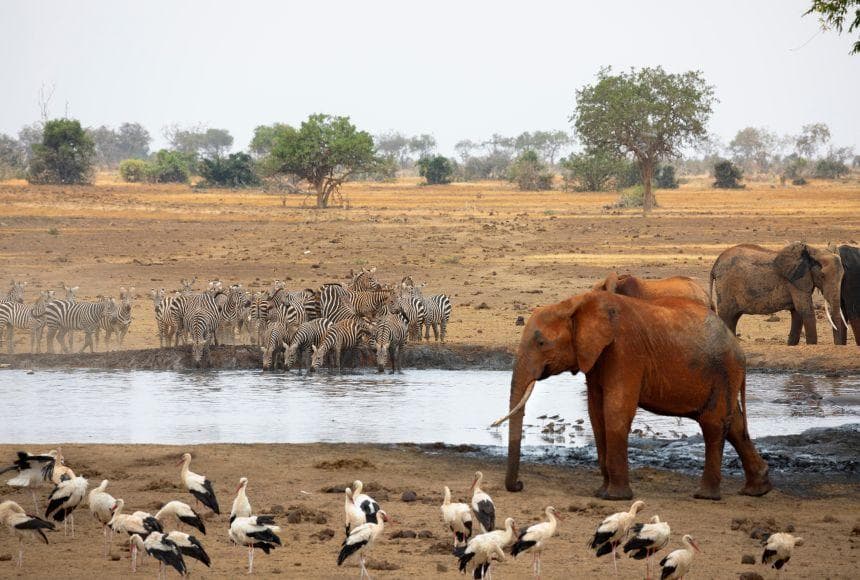What is a Food Web?
A food web is an ecological concept that describes the feeding relationships among different organisms within an ecosystem. Unlike a food chain, which follows a single linear path of energy from a producer to a top predator, a food web is much more complex and interconnected, showing multiple pathways through which energy and nutrients flow across various species.
In a food web, organisms are classified into different trophic levels. Producers, such as plants and other autotrophic organisms, form the base of the food web by converting solar energy into food. Then, primary consumers, which are typically herbivores, feed on these producers. Secondary and tertiary consumers, including carnivores and omnivores, feed on other animals. Additionally, decomposers like bacteria and fungi play a crucial role by breaking down dead organisms and recycling nutrients back into the ecosystem.

Importance of Food Webs in Ecosystems
Food webs are essential for maintaining the balance and stability of ecosystems. Through these interconnections, organisms regulate the populations of other species, ensuring that no group grows too large and exhausts available resources. This natural regulation maintains biodiversity and allows ecosystems to function efficiently.
When a food web is disrupted, for example, due to the extinction of a species or the introduction of an invasive species, it can trigger a chain of effects that alter the structure and function of the ecosystem. These changes can lead to a decrease in biodiversity, loss of habitats, and in extreme cases, ecosystem collapse. Therefore, understanding and protecting food webs is crucial for environmental conservation and long-term sustainability.

Main Components of a Food Web
A food web consists of different types of organisms that play essential roles within the ecosystem. These main components include:
1. Producers: Plants, algae, and certain types of bacteria that perform photosynthesis or chemosynthesis to convert solar or chemical energy into food. They form the base of all food webs, providing the necessary energy for all other trophic levels.
2. Consumers: Divided into three categories:
- Primary consumers: Herbivores that feed directly on producers.
- Secondary consumers: Carnivores that feed on herbivores.
- Tertiary consumers: Predators that feed on other carnivores, occupying the top of the food chain.
3. Decomposers: Organisms such as bacteria, fungi, and some invertebrates that break down dead organic matter and recycle it back into the ecosystem. Their role is vital in decomposing waste and recycling nutrients, keeping the soil fertile and the ecosystem healthy.
Each of these components has an interdependent role in the food web, and any alteration to one of them can have repercussions throughout the entire structure.

How Food Webs are Structured in Different Habitats
Food webs vary significantly depending on the habitat in which they are found. Each ecosystem, whether terrestrial or aquatic, presents a unique structure that reflects the adaptations of the species that inhabit it.
Terrestrial Food Webs: In terrestrial ecosystems such as forests, grasslands, and deserts, plants form the base of the food web. Herbivores like deer, rabbits, or insects feed on these plants and, in turn, are preyed upon by carnivores like wolves, foxes, or birds of prey. These ecosystems also include decomposers like earthworms and fungi, which break down organic matter and recycle nutrients.
Aquatic Food Webs: In aquatic ecosystems such as oceans, rivers, and lakes, algae and phytoplankton act as primary producers. Small fish and other aquatic herbivores feed on these producers and are then hunted by larger predators like bigger fish, sharks, or seabirds. Decomposers in these environments include bacteria and other microorganisms that play a crucial role in breaking down organic matter.
Each habitat presents a unique set of interactions between species, and the structure of their food webs reflects the biodiversity and adaptations of organisms to their specific environment.

Primary, Secondary, and Tertiary Consumers in Food Webs
In a food web, consumers are classified into different trophic levels based on their source of food and their position within the food chain.
Primary Consumers: These are herbivores that feed directly on producers, such as plants and algae. Examples of primary consumers include deer, rabbits, caterpillars, and small fish that consume phytoplankton.
Secondary Consumers: These are carnivores that feed on herbivores. Examples include foxes that hunt rabbits, larger fish that eat smaller fish, and birds of prey that feed on rodents.
Tertiary Consumers: These are predators that feed on other carnivores, occupying the top of the food chain. Examples of tertiary consumers include lions, sharks, and eagles. These organisms typically have few or no natural predators and play a crucial role in maintaining the balance of populations within an ecosystem.
Each trophic level depends on the previous one for energy, creating a complex web of interactions that sustains the flow of energy and nutrients within the ecosystem.
Food Webs at Risk: Extinction of Species and Its Consequences
The extinction of species poses a significant threat to food webs, as it breaks crucial links in the chain of interactions that maintain ecosystem balance. When a species disappears, it can cause cascading effects that impact other organisms within the web, from producers to tertiary consumers.
For example, the extinction of a key predator can lead to uncontrolled increases in herbivore populations, resulting in the overexploitation of producers and, eventually, habitat degradation. Similarly, the loss of a producer or decomposer species can disrupt the flow of energy and nutrients, endangering the survival of multiple species.
Protecting endangered species is essential to preserving the integrity of food webs and ensuring the long-term stability of ecosystems.

Conclusion
Food webs are fundamental to the balance and stability of ecosystems. Through the complex interactions between producers, consumers, and decomposers, the flow of energy and nutrients that sustains various species is maintained. Conserving these webs is essential, especially in the face of species extinction threats, to ensure the health and sustainability of our ecosystems.


